Round diamond are often described as being attractive, radiant, and elegant.
This article offers a thorough overview of everything you should know before buying round diamonds. From understanding the 4Cs (cut, color, clarity, and carat weight) to exploring different diamond settings and certifications, this comprehensive guide will equip you with the knowledge needed to make an informed decision. Additionally, it delves into the history and popularity of round diamonds, highlighting their timeless appeal in various jewelry designs.
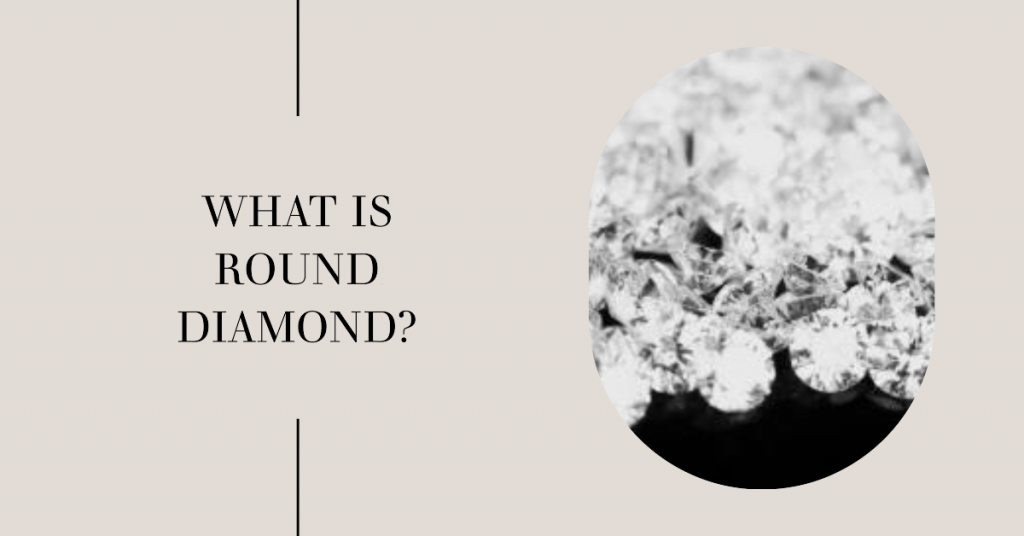
One of the most popular diamond shapes, round diamonds come with a classic uniform and symmetrical shape and 58 facets. Its superior mechanics are responsible for the maximum brilliance and fire it emits. Because of this, they are a preferred material for necklaces, rings, earrings, and other types of jewellery. Interestingly, over 75% of diamonds sold are round-shaped diamonds. The faceting on round-cut diamonds also makes colour and inclusions appear better than in other fancy shapes. You almost certainly can't glance around without running across a round diamond engagement ring since these stones are so cherished that over 50% of all diamonds purchased are round cuts. Its symmetrical shape also offers versatility, as it can complement various styles and settings. Additionally, the round cut's timeless appeal ensures that it remains a classic choice for diamond jewellery enthusiasts worldwide.
The Round Brilliant cut made its introduction in the 18th century. In the beginning, it had 17 facets on the crown (upper half), although this was eventually increased to 33, which enhanced its fire and brilliance.
By 1900, the Round brilliant cut had been perfected thanks to the rapid advancement of modern diamond cutting techniques, the invention of diamond saws, and the improvement of jewellery lathes.
As previously mentioned, Marcel Tolkowsky examined this cut in 1919 and calculated the brilliance (amount of white light reflected) and fire, striking a delicate balance between the two.
These calculations would serve as the foundation for all future brilliant-cut changes, rules, and standards up until this day.
By the 1940s, the Round cut had evolved into the instantly recognizable symbol of love and commitment that we are so familiar with today, thanks to the launch of De Beers' influential advertising campaign for diamond engagement rings.
Since then, a variety of other diamond shapes have had their moments in the spotlight, but always alongside the Round cut, which has earned a permanent spot in our hearts as the most adaptable and sparkling diamond shape available. It makes sense why brides choose it so frequently.
The round brilliant is the only cut lab entity graded for cut quality. The brightness, fire, scintillation, weight-to-size ratio, toughness, polish, and symmetry are the seven criteria used to judge the cut of a diamond. The diamond's grade is determined by the five out of seven categories that it scores the lowest on. To evaluate the cut quality, you should also make sure the diamond is not too shallow or too deep, as misalignment in diamond proportions causes a stone to lose its fire and brilliance. Additionally, the round brilliant cut is known for its ability to maximize the diamond's sparkle and brilliance due to its precise proportions and facet arrangement. It is important to note that a well-cut diamond will reflect light internally and externally, creating a stunning display of light and color. Therefore, when choosing a diamond, it is crucial to consider the cut grade, as it greatly impacts the overall beauty and value of the stone.
The color of a round-cut diamond is graded on a scale from D to Z, where D signifies a completely colourless stone and Z means an easily noticeable yellow or brown tint.
Round brilliant diamonds tend to cover over yellowish tinges in a stone since they reflect more light than any other diamond shape. Additionally, round diamonds 0.50 carats and smaller conceal colour better than bigger ones do. Because of this, even if you wish to appear white, you might not need to get a high-end colourless diamond depending on the size of the diamond you want to buy. However, if you are looking for a larger diamond, it is recommended to invest in a higher quality stone with a higher color grade to ensure that any yellow or brown tint is not easily noticeable. Additionally, it is important to consider the overall clarity and cut of the diamond, as these factors can also affect how well the stone hides any color.
Round diamonds conceal inclusions and flaws reasonably well due to the facets' arrangement and superior light performance. Furthermore, smaller round brilliant-cut diamonds conceal flaws more effectively than larger ones do. For this reason, if you're buying a smaller stone, you may choose a lower clarity grade, like SI1 or SI2, while maintaining an eye-clean appearance.
This is so that any minor flaws can be hidden by the smaller round diamonds' brilliance and sparkle. To ensure a more flawless appearance, it is advised to prioritize a higher clarity grade if you are thinking about purchasing a larger round diamond.
Round diamond engagement rings can be complemented by a wide variety of ring designs. One stone at the centre of the ring, or a solitaire setting, is always in style. To draw attention to the centre stone, round diamonds are frequently set with side stones or encircled by a halo.
Prong settings: This setting supports the stone's girdle from below. Prongs support the stone above the band to highlight the diamond's size and increase brilliance. The six-prong setting, first used by Tiffany & Co. more than 125 years ago, is still a popular option for engagement rings. If you're attempting to choose between the two, you might want to discover the benefits and drawbacks of each prong setting type. A four-prong setup is also an excellent alternative.
Cathedral Setting: Because it mimics the support arches found in places of worship, this arrangement received its name. The diamond may be seen because of the prong setting's slopes on each side.
Bezel Setting: A terrific option if your meant leads a busy lifestyle, metal entirely encircles the diamond in a sleek, contemporary design, providing the diamond's girdle with optimal protection.
Tension setting: The diamond appears to be floating because it is kept in place by the pressure of two opposing bits of platinum or carat gold. Because there is no metal below the diamond in this setting, it is simple to clean, but because the diamond is partially exposed, it is more susceptible to unintentional damage. For those who are active, this environment is not the ideal option.
Pavé setting: Many small gems are set close together, sometimes in a honeycomb pattern, creating the appearance that the ring has been “paved” with diamonds. A pavé setting can encircle the round diamond centre stone like a halo (also known as a halo setting); extend along the band, or do both. Either way, it’s an elegant look!
Channel setting: A grooved channel holds side stones that are set edge-to-edge in a row. If you’re leaning toward an engagement ring with a round centre stone and baguette side stones, a channel setting is a popular option for setting the side stones. Round and princess-cut diamonds can also be channel-set. The gemstones are well protected, making this type of setting style a great choice for daily wear.
Vintage Setting: If you’re a fan of antique style, you will be spoiled for choice when selecting a vintage round-cut ring. The vintage setting looks like a bracelet and enhances the beauty of a round-cut diamond.
Halo Setting: A Halo setting is a collection of smaller stones that make round diamond glitter.
Without a doubt, round diamonds are among the most beautiful gems. Why? They are cut using the finest tools and greatest accuracy. Additionally, its 58 facets provide optimum light reflection. Because of this, they have a captivating glitter.
For generations, people have treasured and passed down the round-cut diamond's brilliance from one generation to the next. For instance, the three-carat round diamond engagement ring worn by Queen Elizabeth was once a piece of Princess Diana's tiara.
Have you ever been mesmerized by the glitter of a diamond? Isn't that a lot? The amount of white light that reflects off a diamond's table to the unaided eye is what we refer to as brilliance. The 58 facets that make up a round diamond's perfect shape are crucial for enhancing brightness. A finely cut round diamond is therefore a true eye-catcher.
The multicoloured light that a diamond emits is referred to as fire. It endows the diamond with personality and beauty. A round diamond with a fine cut may have a lot of fire.
Round-cut diamonds go with many different styles because of their traditional cut and enduring brilliance. For instance, historical or modern round-cut diamond rings can be worn with silver, platinum, gold, or any other metal.
If you’re looking for a versatile and timeless diamond, a round-cut diamond is undoubtedly the one you should choose. At V. Jayantilal & Co., you will find high-quality round brilliant cut diamonds at an affordable price range. You can get in touch with us to help you certify the diamond you are planning to purchase.
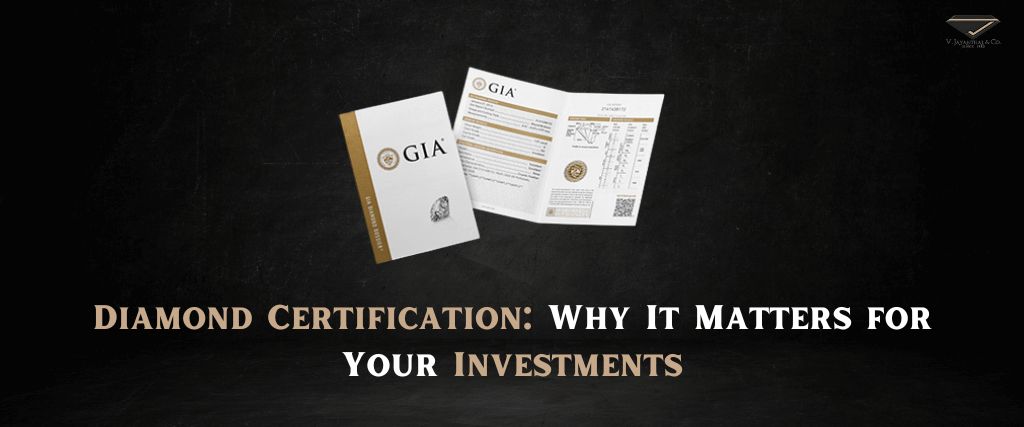
Wondering what diamond certification is? Well, it guarantees that the diamond you receive is worth the price you paid. Let’s learn about its importance and why it matters in this blog. Buying a diamond is a tedious process; you have to look for a perfect fit from thousands of options that match your tastes and suit your pocket. Furthermore, it doesn’t stop here. You must hunt for sufficient documentation to support the legitimacy of your diamond. Diamond certification is a crucial aspect of the buying process as it provides an objective evaluation of the diamond's quality and characteristics. This certification is typically issued by reputable gemological laboratories and includes detailed information about the diamond's cut, clarity, color, and carat weight. Having this documentation not only ensures that you are getting what you paid for but also gives you peace of mind knowing that your diamond has been thoroughly assessed by experts in the field. One obvious difference between them is their price tag. Certified diamonds cost more than uncertified ones, but it is important and well worth the investment to purchase a diamond with a certificate. In this blog, we will explain in detail what diamond certification is and why it is an investment.
A diamond certification or grading report is a scientific analysis of diamonds offered by an independent gem laboratory. The four characteristics of a diamond—carat (weight), cut, colour, and clarity—are measured.
The final grading has a considerable impact on the diamond's price because each laboratory grades and characterizes its gems differently; in fact, occasionally the variances in reports can be significant.
However, since diamond certificates are differentiated, the price and value of diamonds across various certifications cannot be compared.
Diamond certification allows the buyer to get an idea of the real value of their purchase. As a result, certified diamonds are regarded as the most trustworthy diamonds in the market.
Apart from this, certified diamonds have an inscription on their girdle. The diamond's grade number is simply inscribed using a tiny laser. In case you do not have the paper, the inscription on the girdle allows an expert to gather data about your diamond without any hassles. Basically, diamond certification and the inscription on the girdle go hand in hand.
Diamond certification is essential and must not be overlooked by buyers at any cost. Why? Let’s see.
Through diamond certification, professional geologists and trusted lab authorities vouch for the quality of your diamond and give an apt report of its colour, carat, cut, and clarity. With this diamond certificate, you can prove the authenticity of your diamond on the market. Also, with certification, diamonds get a label that justifies their value for their price and also offers safeguards in cases of reselling and replacement.
However, it's crucial to remember that while diamond certifications may justify the value you receive for your money, they have no effect on the diamond's market value.
Overall, diamond certification develops trust in your diamond by enhancing its reputation.
You should acquire diamonds with a certificate for two key reasons:
One additional benefit of diamond certificates is that they simplify gem shopping. Since many of the subtle differences between diamonds are invisible to the naked eye, it is helpful to compare the 4 Cs listed on the diamonds’ certificates.
It's important to focus on consistency rather than grading strictness when comparing the grading reports of two or more entities. The grading report from one lab differs from that of another because various laboratories use different criteria to evaluate the quality of diamonds.
Let's imagine a lab consistently assigns a single grade for clarity that is greater than any other lab. In this case, the lab is not any less reliable. Thus, instead of just comparing the grades of different lab reports, look for consistency in one entity’s grading report.
Contrary to common belief, there is no set formula that governs the grading of diamonds. Each laboratory has its own specific definition of a particular grade range, and it might differ from others.
Therefore, it's crucial to have faith in the organisation and research its standing in the marketplace.
Every lab has the liberty to define and follow its own individual grading technique. Thus, their reports differ from each other. When it comes to the diamond's colour, some laboratories are forgiving, while others could sacrifice clarity. Therefore, having a sound knowledge of the grading laboratory is a must. It allows you to ensure that the value of the diamond on paper (certificate) is real and not forged.
No matter how reputed the lab is, the price of the diamond must be thoroughly evaluated. The diamond's quality must be able to support the price shown on the certificate. Additionally, the diamond's quality, as stated in the certificate, must be seen in person. It is advised to consult an expert if you have any concerns regarding the diamond's quality.
In a word, diamond certification is an important stage in the diamond-buying process that must never be skipped. It gives you a clear idea of what you’re purchasing and whether you’re paying the right price for it or not. Further, after purchase, a diamond certificate can boost the credibility of your diamond in the market and be useful in reselling and replacement. V. Jayantilal & Co. provides GIA, IGI, and HRD-certified diamonds.
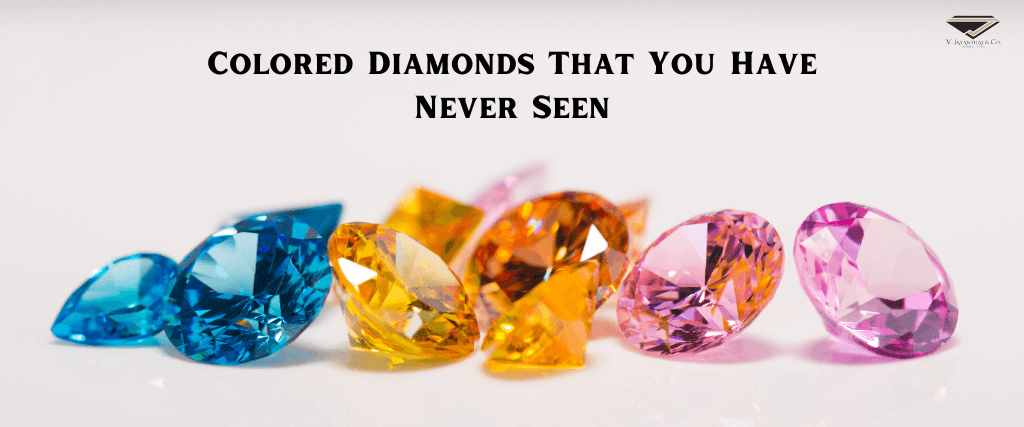
There are many more colours of diamonds than just the often observed clear type, ranging from vivid red tones to deep green sparkles. These highly prized jewels, which cover all the colours of the rainbow, are treasured for their stunning hues and rarity in nature. However, some fancy-colored diamonds are rarer than others. There are a few colors that are so rare that collectors and diamond enthusiasts highly seek after the singular stones on the market.
To assist you in determining whether a colored gemstone is a suitable fit for you and your piece of diamond jewellery, in this post, we'll examine which colours are the rarest and learn how that rarity influences cost and availability.
As the diamonds originate deep under the ground, each natural colour has its unique combination of minerals, ambient pressures and temperatures, the incubation period (often aeons), gases, elements, and other variables.
Diamonds are scientifically classified as either Type I or Type II, depending on whether nitrogen is present and how it is configured within the matrix.
About 98% of all gem diamonds are of type IaA or IaB; IaA is mostly found in the Cape Province of South Africa, while IaB is found in the Buffalo Hills of Namibia and Eurasia. In the matrix of Type IaA diamonds, nitrogen atoms are paired, but in Type IaB, they are clustered. Because they frequently combine with Type IaA in the same stone, pure Type IaB diamonds are rare.
These are the most sought-after by collectors and investors. Type IIA is chemically the purest, with no measurable nitrogen or boron impurities. Type IIB includes no nitrogen but does contain boron.
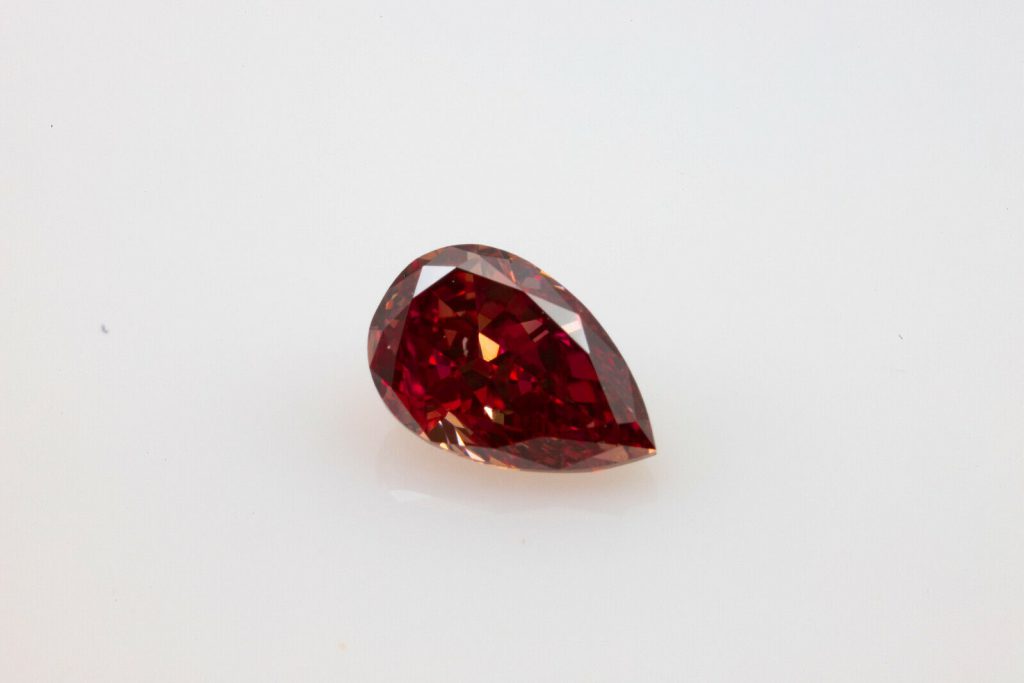
Of the various colours, Fancy Red Diamonds are by far the rarest. They are rare and are sourced from very few locations worldwide. The exact processes that create red diamonds remain a mystery. They are generally thought to involve plastic deformation that distorts their molecular structures. Only 20 to 30 natural red diamonds exist worldwide, making them the rarest of all colored diamonds. The Moussaieff Red, a 5.11-carat fancy-red diamond with an IF clarity grading, is among the two most well-known Red diamonds. This stunning stone is renowned as the world's biggest internally flawless red diamond, the Hancock Red Diamond, A 0.95-carat Fancy purple-red Round Brilliant Diamond. Despite being somewhat less than a carat, this stone is among the most well-known red diamonds ever because of its color.

Blue diamonds, which have only been discovered naturally in diamond mines in South Africa, India, and Australia, are also exceedingly uncommon. They are pushed from deep underground to the surface by little volcanoes called Kimbers. They are coloured because of the presence of hydrogen and boron. The element boron, which takes the place of carbon in the diamond crystal structure throughout the development process, gives these ice stones their distinctive colour. Blue diamonds can be any shade, from a subtle blue tint to an alluring deep blue. They are categorised as Type IIb Fancy and range in colour from Faint Blue to Fancy Dark Blue, with the majority having an additional tint. The Hope Diamond, a 45.52-carat fancy deep grayish-Blue diamond with a VS1 clarity rating, is one of the most well-known Blue diamonds ever discovered. A fancy deep blue diamond weighing 31.06 carats with an IF (internally flawless) clarity grade is known as the Wittelsbach Graff.
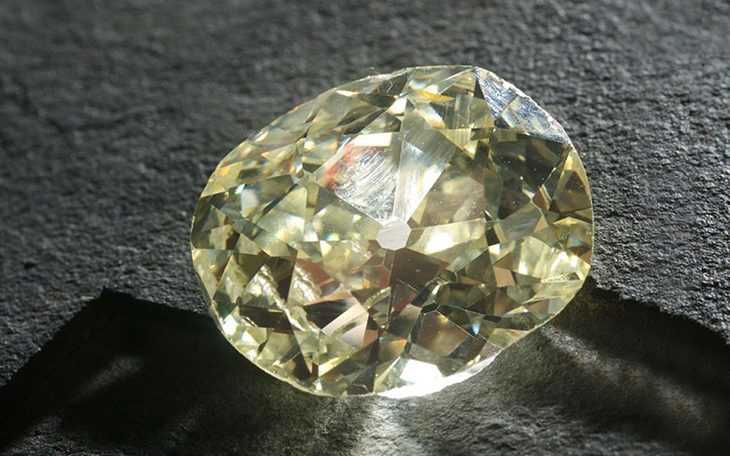
Yellow diamonds get their color from nitrogen during formation. All it takes is a 0.10% concentration within the matrix! However, the most desired are Canary Yellow Diamonds, pure yellow fancy diamonds that are more costly than other yellow stones. Surprisingly, some yellow diamonds can cost less than a colourless stone of comparable size and value. With a weight of 100.90 carats and a price tag of $16.3 million, the Graff Vivid Yellow diamond was the biggest and most costly yellow diamond ever sold.
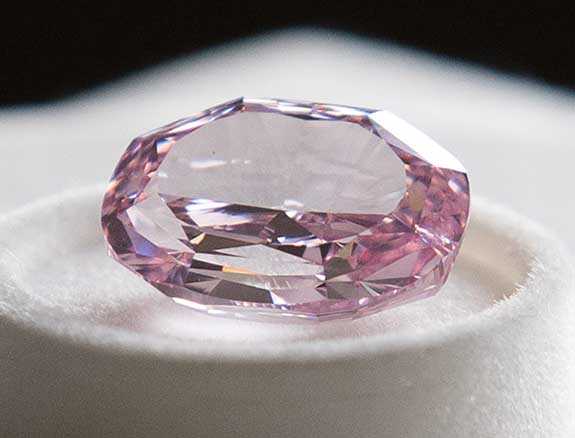
Red and pink diamonds both acquire their colours through plastic deformation in the absence of contaminants. Pink diamonds are now renowned for their amazing financial potential and their highly intense and feminine colours. Pink has long been associated with romance and love, making it a popular diamond wedding band or engagement ring choice. The Graff Pink, a 24.78-carat Fancy Intense Pink diamond, is one of the two best-known pink diamonds. This stone has been assessed to have possible flawless features, which is highly unusual. The Steinmetz Pink is a 59.60-carat fancy vivid pink, internally flawless (IF) stone.
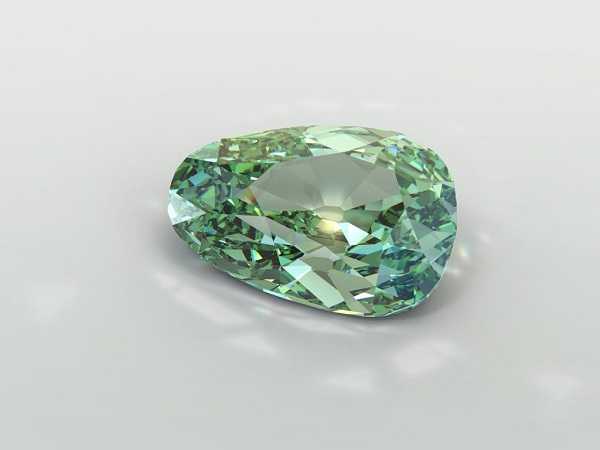
Contrary to other colours, it is almost impossible to identify if any type of artificial enhancement was done on a Green diamond in order to enhance the color. Diamonds turn green through irradiation. Green diamonds, which are among the rarest fancy-colored diamonds, are made of the minerals nitrogen, hydrogen, or nickel. They are from South America, Africa, and India. Therefore, most cutters leave an untouched ‘natural’ along the Girdle of the stone, which is considered acceptable and does not reduce the clarity grade of the diamond.
Two of the most common Green diamonds are Ocean Dream, a 5.51-carat fancy deep blue-green shield-shaped diamond. 40.70-carat, naturally green, pear-shaped diamond, the Dresden Green. The Vivid Green Diamond, which fetched USD $3.08 million at Sotheby's in 2009, was one of the most valuable green diamonds ever sold at auction.
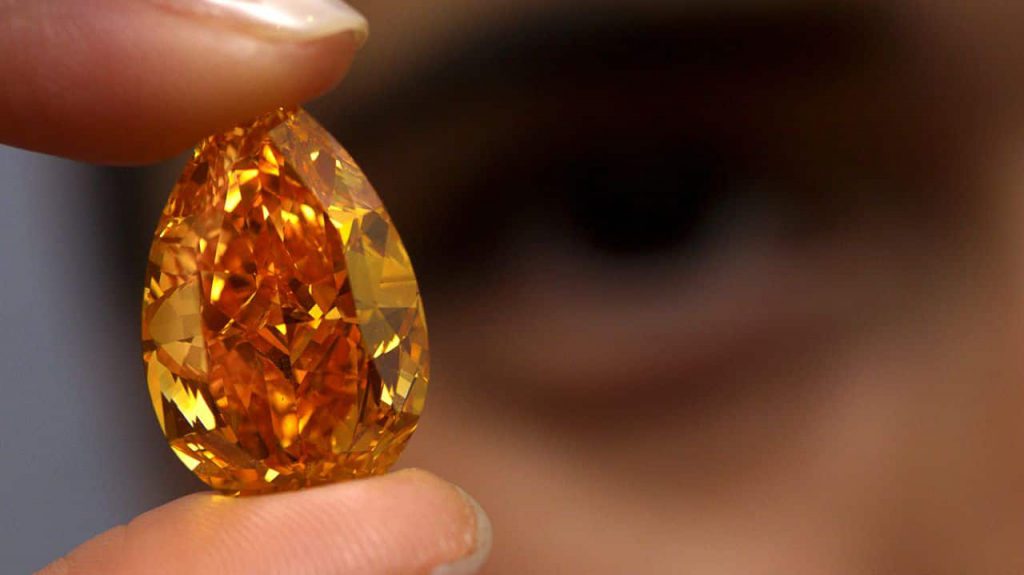
One of the beauties of colored diamonds is that no single stone is better than another. It is simply which colors people prefer. The Dresden Green is a natural, pear-shaped, 40.70-carat green diamond. The Vivid Green Diamond, which sold at Sotheby's in 2009 for USD $3.08 million, was one of the most valuable green diamonds ever sold at auction. Orange diamonds are rare, especially those without secondary colours. Two of the most famous Orange diamonds are the Pumpkin Orange, a 5.54-carat fancy vivid orange cushion-shaped diamond.
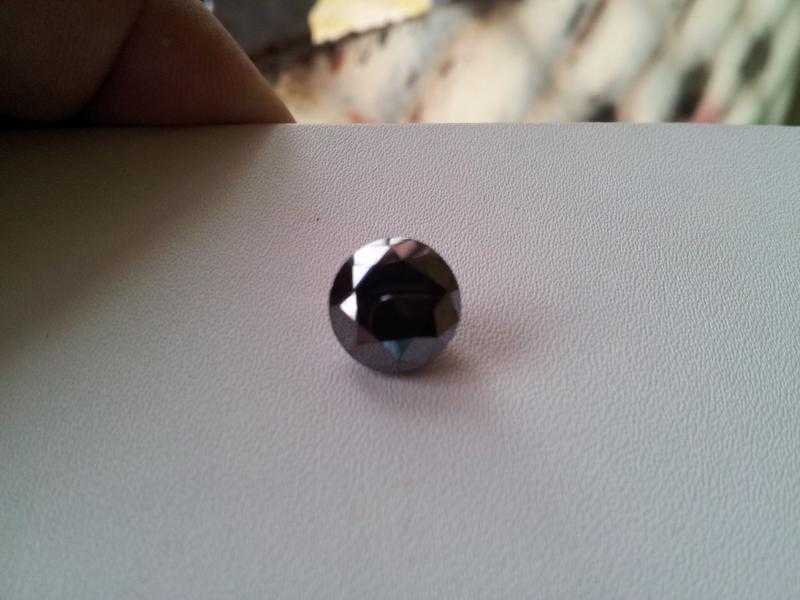
Popular with males, black diamonds, which contain graphite, come from Central Africa and Brazil. They're opacity. Artificial improvement is performed by burning the rough stone to blacken it. Despite being more expensive than colored diamonds, natural black diamonds are rare.
As you can see, there is a lot to learn about diamonds; in fact, what we have covered here is just the tip of the iceberg. Natural diamonds with colour are extremely expensive and rare. You may discover top-notch diamonds in a variety of colours at competitive costs at V. Jayantilal & Co., a reputable diamond production firm.

The discovery and operation of various diamond mines across the globe drive the diamond industry. Among these mining operations, the biggest diamond mines stand out for their immense size and productivity. These colossal mines, spread across different continents, have become renowned for their significant contributions to the global diamond supply. From the vast open-pit mines in Africa to the underground mines in Canada, the biggest diamond mines continue to shape the industry. These mining giants employ advanced technologies and thousands of workers to extract natural diamonds from the earth, fulfilling both commercial and consumer demands. With their massive scale and unparalleled production capabilities, the biggest diamond mines play a pivotal role in ensuring a steady flow of these precious gemstones to meet the world's appetite for their beauty and rarity.
Diamond mining is one of the world's most prestigious and profitable industries. For centuries, diamonds have been an essential component of royal crowns. But in addition to jewellery, they are used in business and science. Being the most complex material on Earth, they’re used to cut, drill, or grind other hard materials.
The diamond industry is a multibillion-dollar market. Diamonds are used to manufacture tools and machinery, such as drills and saws.
If you're interested in learning about the treasure houses of diamonds (a.k.a. diamond mines), you're in the right spot. Several methods are utilized to reach the world's diamond reserves, including open-pit, underground, and alluvial mining (used for riverbeds and beaches). They can be discovered in kimberlite, an igneous rock transported closer to the earth's surface by a particular kind of volcanic explosion called a kimberlite eruption.
Read on to learn about the five largest diamond mines in the world.
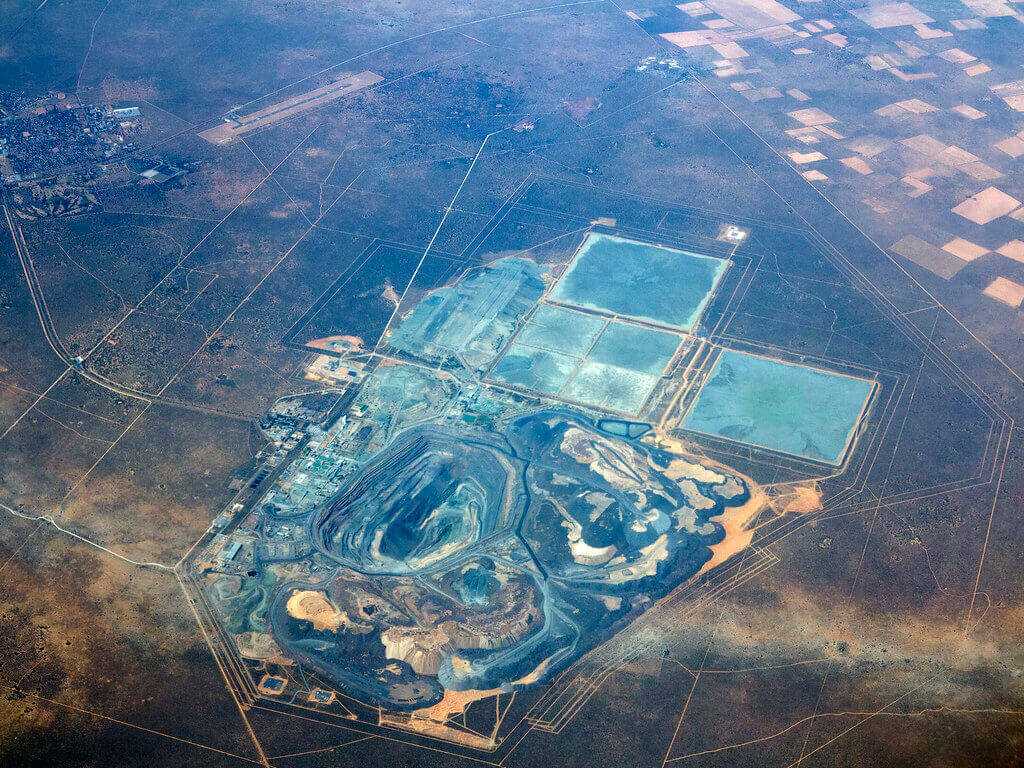
Jwaneng, an open-pit mine 160 miles from Gaborone, is the most valuable diamond mine in terms of value. It was founded in 1972 and began commercial production in 1982. Debswana, a partnership between De Beers and the government of Botswana, owns and runs Jwaneng. It is situated in the southern part of the country, in the Kalahari Desert. De Beers Group is the biggest mining company in the world, possessing 35% of global rough diamond production. Owned by Debswana Diamond Company, a joint venture between De Beers and the Government of Botswana. Currently, the mine operates at a depth of 400 meters. The location of the Jwaneng mine also encompasses the Jwana Game Park, which is active in cheetah conservation in the African nation. Jwaneng is renowned for the quality of diamonds that it excavates, and the site has also been garlanded with numerous national and international safety awards.
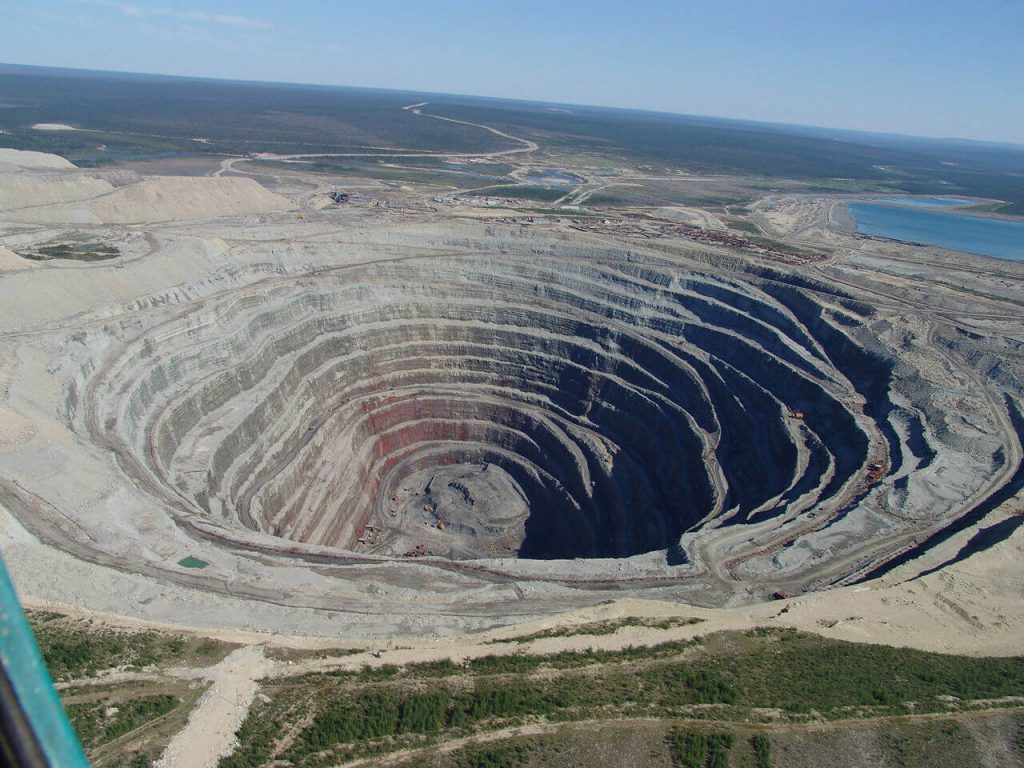
Udachny is the third-biggest diamond mine in the world and is also located in Yakutia, like the Aikhal mine. It is part of the ALROSA Group. The diamond mine is an open-pit mine with a depth of more than 630 meters, which is considerably deep for an open pit. It consists of the Verkhne-Munskoe pipe, the Udachny pipe, and the Ziarnista pipe. More than 164 million carats of diamonds were totaled during the course of these deposits. The most productive mine in Russian history, Udachny, may be thought of as Mir's twin. Beginning in 1971, open-pit operations at the Udachnaya pipe eventually ran out of reserves by 2016.
The mine is currently operating at a depth of 110m and is designed to reach 200m. Udachny is also notable for being one of the ten deepest open mines anywhere in the world. The annual production of the mine is around 5 million carats due to the underground mine.
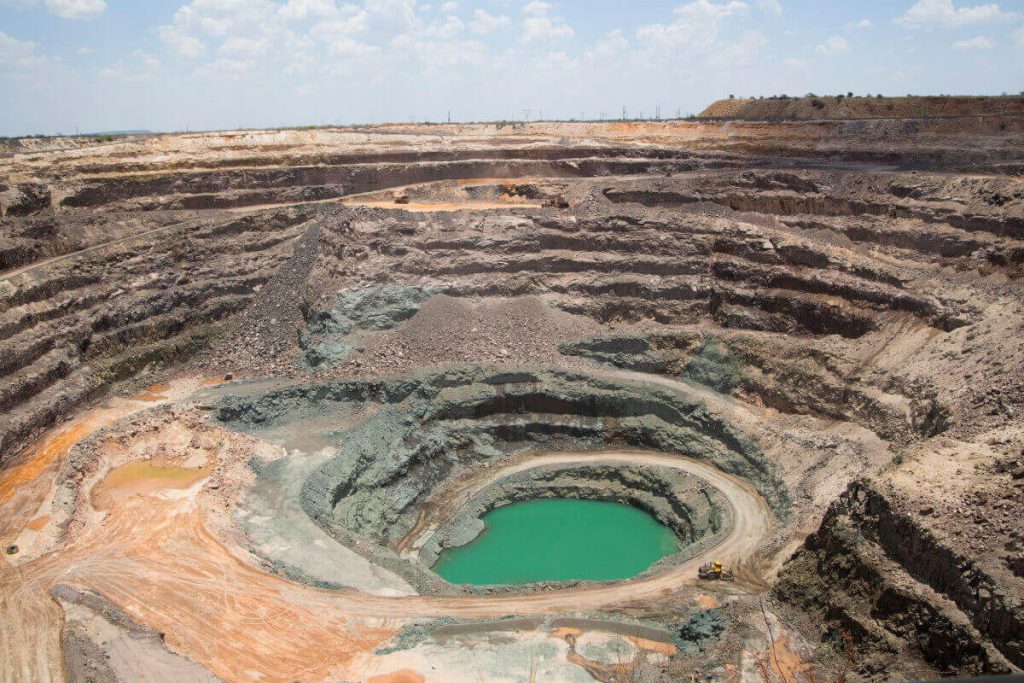
The Orapa diamond mine is named for the eastern Botswanan city where it is situated. Similar to the Jwaneng mine, the De Beers Group owns the diamond mine through a partnership with the government of Botswana. It produces about 11 million carats per year. The Orapa mine is one of the largest diamond mines in the world and has been in operation since 1971. The diamonds produced at the mine are known for their high quality and are sold globally through De Beers' distribution channels. A new town was developed to service this mine, which is regarded as one of the largest mines in the world in terms of area. Mining is now being done at a depth of 250m and is anticipated to reach 450m by 2026. In 2006, they set a record with 17.3 million carats of diamonds. Debswana is now doing a rigorous study to extend the mine life with a new open pit termed Cut 3.
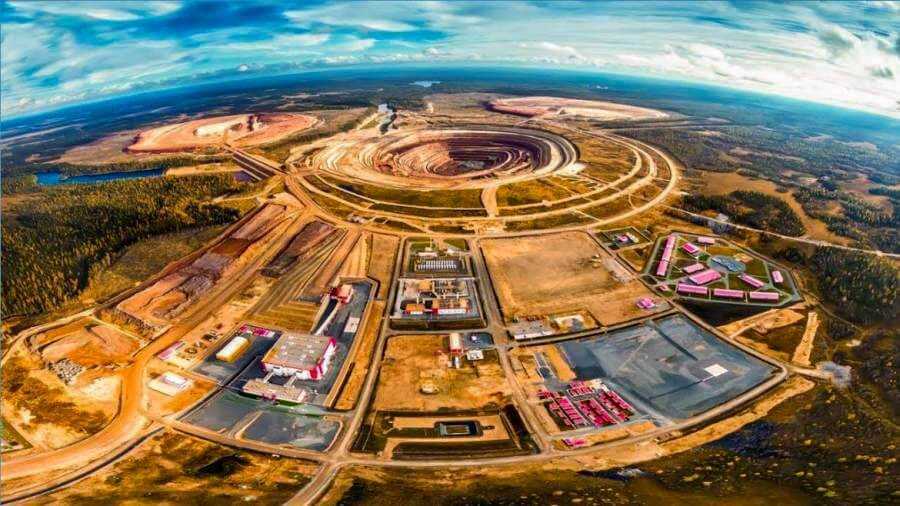
Northeast Angola is where the Catoca diamond mine resides. The African diamond mine is the sixth-largest diamond mine in the world. It is owned through a joint venture between Endiama (32.8%), The ALROSA Group (32.8%), China Sonagol (18%), and Odebrecht Mining (16.4%). The Catoca is an open-pit mine that began production in 1997. Its normal annual output is around 10 million carats, but it had a downfall in 2020 of 80%. This diamond mine is run by Sociedade Mineira De Catoca in collaboration with Alrosa, Endiama, and Lev Leviev. The Catoca mine produced 7.65 million metric tons of diamonds from approximately 11.42 million metric tons of ore in 2016, which accounted for 75% of Angola’s total diamond output. The operating depth at the open-pit mine currently exceeds 245 meters. Despite the significant drop in production in 2020, the Catoca mine remains one of the largest diamond mines in the world.
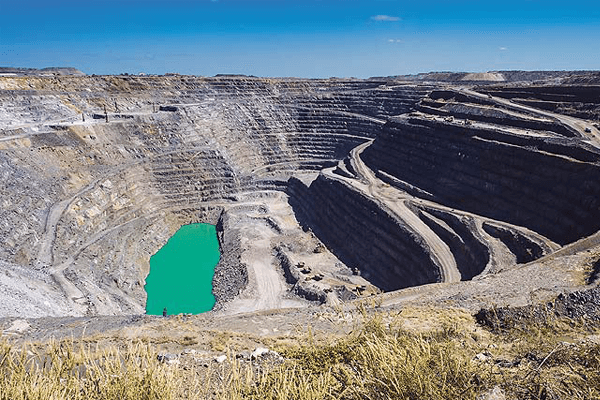
Near the Limpopo River in South Africa's northeast is where you'll find the Venetia diamond mine. This diamond mine accounts for 40% of South Africa’s annual diamond production. Thereby, it is the biggest diamond-producing mine in South Africa. It is currently an open-pit mine, but that will only last until 2021. After then, production will take place in an underground mine with a projected life of up to 2046. It is owned by De Beers. In 2013, De Beers committed to investing up to $2 billion to expand the Venetia mine underground, with production to commence in 2022. The expansion plan could add considerably more reserves to the project than currently estimated. Excavation work for the underground operations was commenced in 2013, with the decline tunnel reaching a depth of 2,400m in 2018. Production from the underground mine is expected to start in 2022.
| Diamond Mine | Location |
| Argyle Diamond Mine | Western Australia |
| Cullinan Diamond Mine | South Africa |
| Diavik Diamond Mine | Canada |
| Ekati Diamond Mine | Canada |
| Finsch Diamond Mine | South Africa |
| Jubilee Diamond Mine | Russia |
| Jwaneng Diamond Mine | Botswana |
| Karowe Diamond Mine | Botswana |
| Mirny Diamond Mine | Russia |
| Orapa Diamond Mine | Botswana |
| Premier Diamond Mine | South Africa |
| Venetia Diamond Mine | South Africa |
| Williamson Diamond Mine | Tanzania |
As you surely observed, Russia boasts the world’s largest and wealthiest diamond resources. On the map, Botswana is another major participant from Africa. Africa's Angola is well recognised for its medium- and yellowish-colored round diamonds. These are the top five biggest diamond mines in the world. If you are interested in knowing more about diamond cut, shape, and size, visit our website, V. Jayantilal & Co., to upgrade your knowledge.

